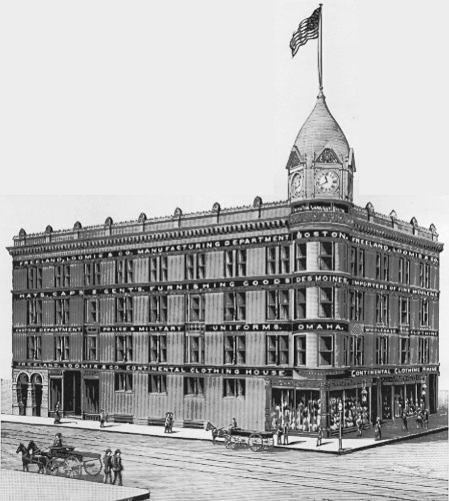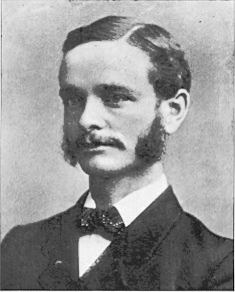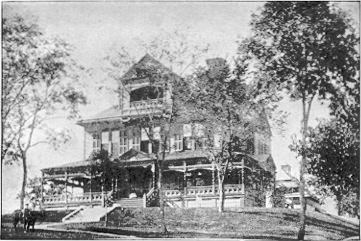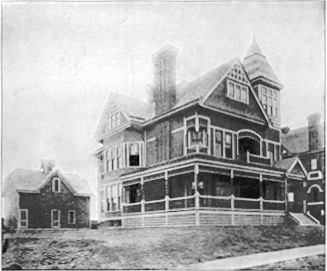|
offices, one block west. The Strang Building, the Rosewater Block, the Byers Block and the Arlington Block are other four-story structures worthy of mention. In course of erection are notably the seven-story Bee Block, at Seventeenth and Farnam streets, the Young
|
|||||||||||||||
|
consumed by local distilleries, breweries and mills. The Omaha firms engaged in handling grain have elevator capacity of about 16,000,000 bushels, an amount grossly inadequate, when it is understood that the annual grain production of Nebraska alone exceeds 300,000,000 bushels. With such resources at its back, it is very evident that Omaha can become a great grain market. Indeed, its grain trade has already developed to the full measure of its storage capacity, and capital is now considering the erection of one or more large elevators to meet the demand. Due credit has been given to the vim, sagacity and enterprise which have built up the prosperous, handsome city here described, but as yet the chief factor in building the city has only been touched upon its railroads. Whatever may be the merits, or otherwise, of the railroad question, it cannot be gainsaid that railroads are the most important adjunct of a city devoted to commerce and manufactures. Omaha is liberally supplied in this respect. It is at present the terminal 
CONTINENTAL CLOTHING HOUSE, OMAHA BRANCH. [The above cut represents the newly erected building of the Continental Clothing House of Omaha, Freeland, Loomis & Co., proprietors, and on the opposite page is a cut of the famous Boston house of the same name and of which the Omaha establishment is a branch. The business of the Continental Clothing House has been established in Boston for more than thirty years, where it has grown from a small beginning to be the largest of its kind in the New England States anywhere. The manufactury is located in the Boston house, where there are employed between five and six hundred hands, regularly, in the manufacturing of the stock for the Omaha and other branch stores of the establishment. The proprietors of the establishment have fixed upon Omaha as the most important point for the western distributing branch of their business, and will eventually transfer a large portion of their manufacturing to this city, where, in the near future, it is proposed to enter into competition with the large western wholesale markets of Chicago and St. Louis in supplying the demand of the great West and Northwest, which must look to Omaha for its supplies of every description. Recognizing in the varied character of Omaha's business life the surest pledge of its future prosperity, and also considering its position as a great commercial center, with the railroads radiating from it in every direction, and the great territory tributary to it, it is the purpose of the Continental Clothing House to cultivate and develop, as far as possible, its business interests in this city, which must grow to be second to none of the great cities in the West. With unequaled facilities as direct importers from all the markets of the world of fine woolens and merchandise in our line, and as among the largest clothing manufacturers in the United States it is our purpose to offer every advantage to the people of Nebraska and all the country tributary to Omaha that can be obtained in any of the markets of the United States. The Continental Clothing House is to become an Omaha institution, devoted to Omaha and Western interests, and with the purpose in view of developing the business in our line to the highest point of perfection possible.] |
|
|
|
|


